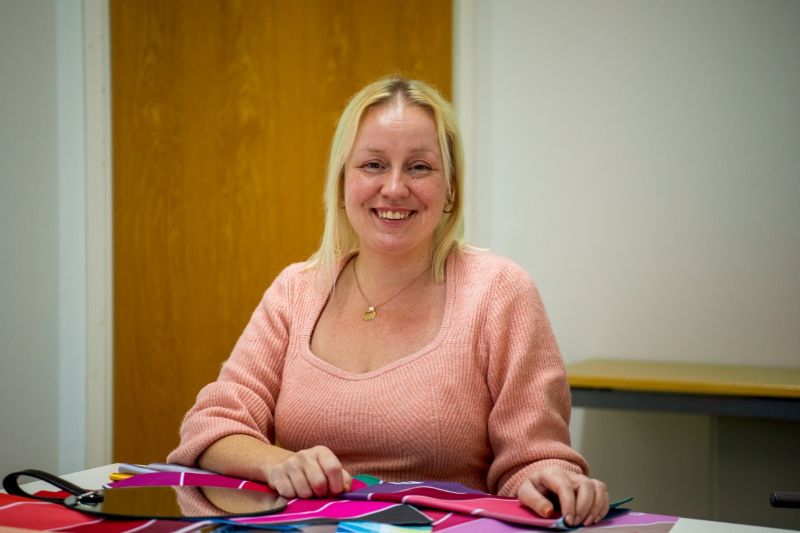Stylist
"If you feel that helping people with clothes and colours is your thing, you should definitely try the work of a stylist. Although the field can be challenging and there's always something new to learn, I still recommend the profession. The studies provide a lot of good tips and understanding of how to bring the best out of people."

- Annika Löfberg
- Works as a stylist as a light entrepreneur.
- Has completed the Vocational Qualification in Crafts and Design and the Further Qualification in Sales in the Raisio Regional Education and Training Consortium.
- Eight years of work experience in the field.
Briefly explain what you do for a living.
I work as a light entrepreneur and offer stylist services to private customers in Southwest Finland. My services include style consultation, body and colour analyses as well as online coaching.
How have you ended up in the profession of your choice?
I have worked in several different professions over the years, ranging from a cashier to a make-up artist. I became a stylist through my Further Qualification in Sales. My aim was to work at a clothing store and use the skills gained from the stylist studies. However, my mother became seriously ill, and when I treated her, I realised that I don't want to spend my life working at a job that's only part of what I really want. Since then, I have worked as an independent stylist.
Describe your typical working day or week.
My working weeks vary a lot, which I like, and they often include trips to Turku. I carry out colour analyses for customers and help them find suitable clothes at shops in Turku and Salo. Sometimes I'm asked to carry out colour analyses for different groups, and most of the time I travel to do them on site. I also offer online coaching, so the week usually includes consulting customers remotely on clothing and style choices. That's when I look for clothes online or use digital fabrics in colour analyses.
What kind of work environment or working hours do you have?
I work at home and at a rental space and go around clothing stores.
I usually work between 9.00 and 16.00 on weekdays, but the working hours can be flexible.
What kind of competence or qualities are required in the profession?
This profession requires creativity and a good eye for colours. It's also important to understand how different body types affect the choice of clothes. Choosing clothes is a personal and sensitive issue for many, so being able to communicate, understand and encourage different people is key.
What is the best thing about your profession?
I work as a personal stylist, so knowing fashion trends is also important but not as emphasised as in fashion shows or films or with celebrities.
What are the downsides of the profession or what seems challenging?
The best thing about my profession is to help customers see their own beauty. Many of those who come to me are hiding themselves. The trying-on sessions help them see how good the right clothes and colours make them look, and they burst into bloom. Seeing how their self-confidence grows is rewarding.
The downside is the independence of my work, as I'm responsible for everything. It can also be a good thing, but there were moments – especially when I started – when I could've used peer support.
What would you tell a person considering the profession of a stylist?
If you feel that helping people with clothes and colours is your thing, you should definitely try the work of a stylist. Although the field can be challenging and there's always something new to learn, I still recommend the profession. The studies provide a lot of good tips and understanding of how to bring the best out of people.
How do you see the future of your profession?
I think the future looks good for stylists. Nowadays, it's not just celebrities who use stylists when choosing clothes but also regular people. Our services have also become more and more common online, and I see it as an important part of the future.
